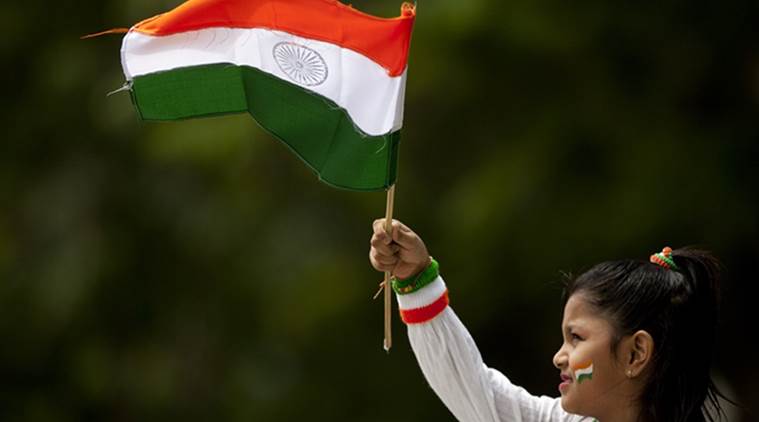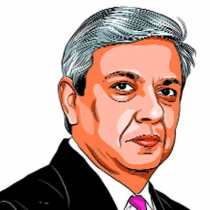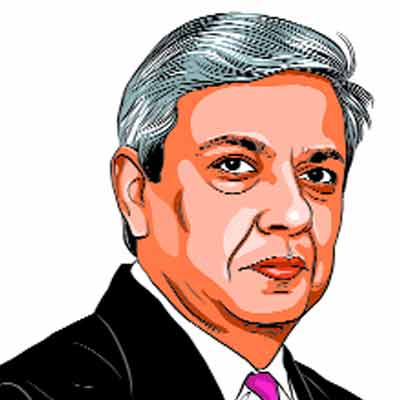Taking stock at 71
We have not made sufficient investments for a fair, just and humane society

Why should it be that 71 years after Independence, one-half of school students of Class 12 or below struggle with basic arithmetic — in a country which believed that it was universally numerate? (Source: AP Photo/File )
On the midnight of August 15, 1947, when I became a nation free of imperial rule, and while Pandit Jawaharlal Nehru delivered his most unforgettable speech, thousands of Hindus and Muslims were butchering terrified refugees across Pakistan and the Punjab as the poor souls fled their hearths and homes to what they considered were places of safety. Amidst the pain and grief in the refugee camps that dotted the Punjab and Delhi, I wept. Yet, as I mourned for the innocents who were slaughtered and the millions displaced, I believed that in the new era of independence and modernity, such bestiality would be a thing of the past.
How naïve I was. While the country built dams, bridges, steel mills, IITs, large corporations and many such temples of modern India, I saw more such mass violence blessed at the temples and mosques of a divided land. Not once, but many times over. I remember the anti-Urdu agitation that led to the Ranchi-Hatia riots in 1967, which killed some 200 people; followed by the first Gujarat riot in 1969 spurred by the alleged desecration of a dargah and a temple that claimed over 500 lives; and another Hindu-Muslim uprising in 1980 in Moradabad with more than 400 being slaughtered. Sadly, that wasn’t all.
As India graduated from the Ambassador and Fiat of the licence-control raj to the peppy Maruti 800 that signalled the beginning of economic reforms, I witnessed the worst massacre ever at Nellie in Assam in February 1983. In a calculated eight-hour pogrom designed to wreak maximum havoc, some 8,000 to 10,000 Bengali Muslims across 14 villages were butchered by the locals, though the official toll was 2,191. It was the foulest mass murder since my birth on August 15, 1947.
It didn’t end at Nellie. There were the Bhiwandi riots in 1984 because of a saffron flag being hoisted on a mosque, leading to some 280 dead. Then came the massacre of the Sikhs in Delhi after Indira Gandhi’s assassination on October 31, 1984. Orchestrated and led by local Congress leaders and their thugs, over 2,800 Sikhs were stabbed and burnt to death in the first three days of November, a massacre such that Delhi had not seen since Nadir Shah unsheathed his sword at Chandni Chowk on March 22, 1739. And to prove that what Congress can do, we can do better, between February 27 and March 2, 2002 — a decade into economic liberalisation that ushered in an unfettered, rapidly growing India — assailants of the BJP in Ahmedabad butchered some 1,050 people in retribution for the torching of a train in Godhra that killed 58 Hindu karsevaks returning from Ayodhya.
Between these two epochal events there were several other riots and mass lynchings such as in Ahmedabad in 1985 claiming 275 lives; Meerut in 1987 accounting for 346; Bhagalpur in 1989 with over 1,000 dead; Hyderabad in 1990 with a toll of over 200; and the Bombay riots of 1992 with its 250 deaths. All but two involved Hindus and Muslims, the exceptions being the anti-Sikh violence in 1984 and ethnic cleansing in Nellie, though the dead were Bengali Muslims.
Sadly, my tragedy is not limited to such terrible violence that I have witnessed. Consider the systematic violence against the female foetus through ultra-sound for sex determination followed by illegal abortions. As a nation whose khadi-clad women stood with their men and equally suffered lathi charges and jail terms in their quest to secure freedom, I weep in anguish when I see how the unborn girl child is massacred in Haryana, Punjab, Jammu, Rajasthan and other parts of north India. In 2011, every district in Haryana had a 0-6 years girl-to-boy sex ratio that was far worse than the nation’s average which, in turn, was way poorer than all of Africa and much of Asia. How did we so successfully use ultrasonography, a simple technology to aid life, to facilitate the death of unborn innocents?
How did we fail in school, college and university education? Why should it be that 71 years after Independence, one-half of school students of Class 12 or below struggle with basic arithmetic — in a country which believed that it was universally numerate? For the first decolonised nation to introduce IITs, IIMs and some great centres of higher education, why are only nine of our institutions ranked among the top 500, while China has 22, South Korea 15 and even tiny Taiwan 11? Why do our girls in so many parts of the land get systematically less access to education — a fundamental reason why the share of women in the workforce is so much lower than any comparable nation in the world?
And 71 years on, for all the development that we should be proud of, why does much of the eastern part of the country — defined by a longitude running to the east of Allahabad — languish behind the northern, western and southern states? Be it in access to permanent housing, electricity, conveyance, household consumption, and almost anything else of significance that one might think of. How could these state governments survive despite delivering so little across vast tracts of unimaginable poverty and deprivation, such as in much of Chhattisgarh, Jharkhand, Bihar and Orissa?
At 71, then, I laud our industrial achievements, our impressive growth rate, our cars, our entrepreneurial spirit and our ever-growing and increasingly prosperous middle class. Yet, while doing so, I fear that we have wasted seven decades without making sufficient investments for a fair, just and humane society. I fear sectarian violence; lynching in the name of cows; the proliferation of rape; the excess of callous violence; the profound failure in education. I fear that women have been left far behind; and I fear that the social constructs necessary for a fair nation have been wilfully ignored.
At 71, I could be an aged alarmist, and wrong on all counts. Somehow, I think not. Let’s pray for a more just India at 81. The India that we had dreamt of in our tryst with destiny.
Goswami is founder and chairperson of CERG Advisory Private Limited
For all the latest Opinion News, download Indian Express App
More From Omkar Goswami
- So, how did they ponzi it?How did Nirav Modi, Mehul Choksi and some rogue bankers take PNB for the mother of all rides?..
- The Big Bong TheoryAn effective, humourous account of the history and idiosyncrasies of the Bengali community — from one of their own...
- First, fix the banksFinance minister must recapitalise better public sector banks. This will strengthen distressed balance sheets ..







































No hay comentarios:
Publicar un comentario